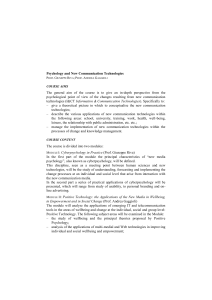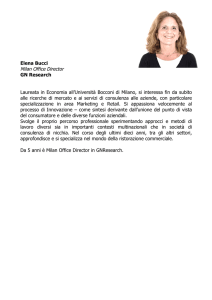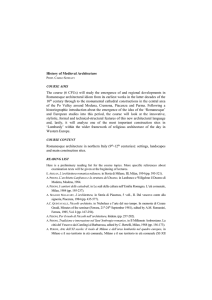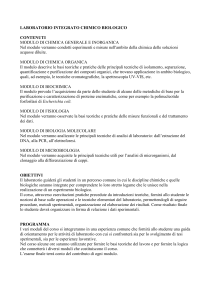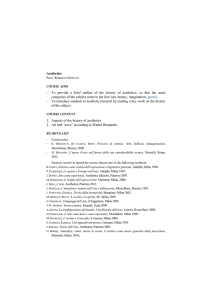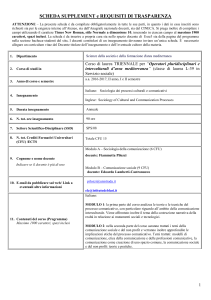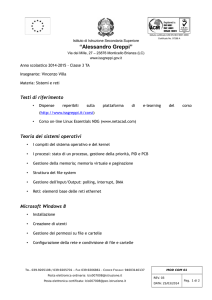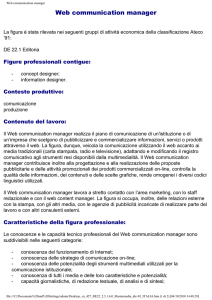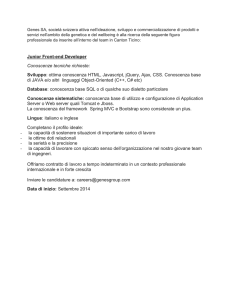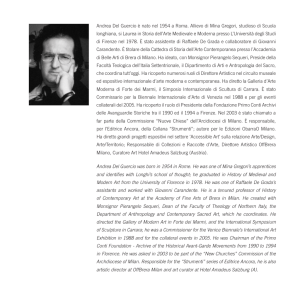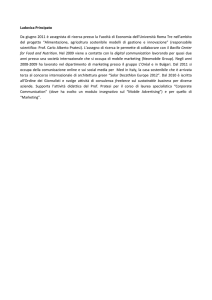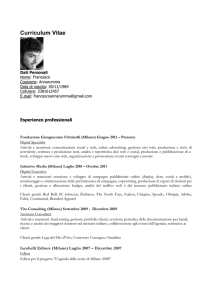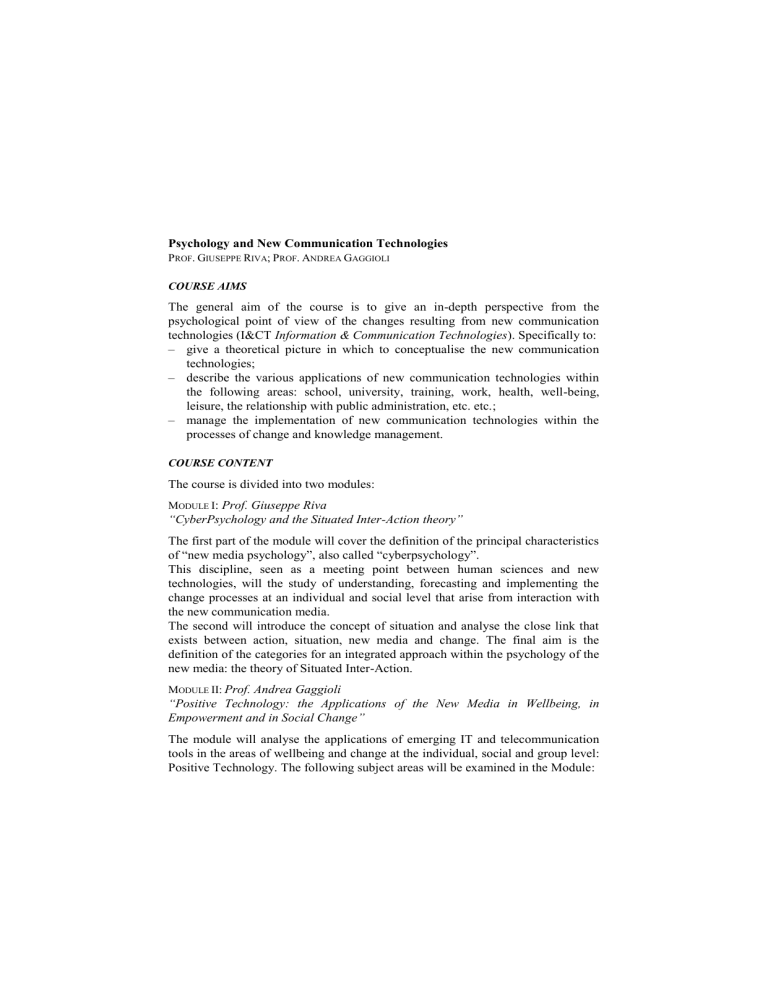
Psychology and New Communication Technologies
PROF. GIUSEPPE RIVA; PROF. ANDREA GAGGIOLI
COURSE AIMS
The general aim of the course is to give an in-depth perspective from the
psychological point of view of the changes resulting from new communication
technologies (I&CT Information & Communication Technologies). Specifically to:
– give a theoretical picture in which to conceptualise the new communication
technologies;
– describe the various applications of new communication technologies within
the following areas: school, university, training, work, health, well-being,
leisure, the relationship with public administration, etc. etc.;
– manage the implementation of new communication technologies within the
processes of change and knowledge management.
COURSE CONTENT
The course is divided into two modules:
MODULE I: Prof. Giuseppe Riva
“CyberPsychology and the Situated Inter-Action theory”
The first part of the module will cover the definition of the principal characteristics
of “new media psychology”, also called “cyberpsychology”.
This discipline, seen as a meeting point between human sciences and new
technologies, will the study of understanding, forecasting and implementing the
change processes at an individual and social level that arise from interaction with
the new communication media.
The second will introduce the concept of situation and analyse the close link that
exists between action, situation, new media and change. The final aim is the
definition of the categories for an integrated approach within the psychology of the
new media: the theory of Situated Inter-Action.
MODULE II: Prof. Andrea Gaggioli
“Positive Technology: the Applications of the New Media in Wellbeing, in
Empowerment and in Social Change”
The module will analyse the applications of emerging IT and telecommunication
tools in the areas of wellbeing and change at the individual, social and group level:
Positive Technology. The following subject areas will be examined in the Module:
– the study of wellbeing and the principal theories proposed by Positive
Psychology;
– analysis of the applications of multi-medial and Web technologies in improving
individual and social wellbeing and empowerment;
– Planning Positive Technologies: the role of the Psychologist in the design and
development of technological applications aimed at wellbeing.
As well as analysis of these topics, the aim will be to provide the tools for
planning, design and evaluation of the effectiveness of Positive technology
applications.
READING LIST
G. RIVA, Il Social Network, Il Mulino, Bologna, 2010.
G. RIVA-L. MILANI-A. GAGGIOLI, Networked Flow, LED Edizioni, Milan, 2009.
Plus one book chosen from the following:
MAZZONI, Dallo sviluppo degli artefatti web all'evolversi delle attività umane. I processi del
cambiamento, Morlacchi Libri, Milan, 2006.
MARDEGAN-RIVA, Web 2.0: Marketing e Pubblicità, Sprea Edizioni, Milan, 2009.
MARDEGAN-PETTITI-RIVA, Mobile Marketing: La pubblicità in tasca, Lupetti, Firenze, 2011.
MORGANTI-CARASSA-RIVA, Intersoggettività e interazione. Un dialogo fra scienze cognitive, scienze
sociali e neuroscienze, Bollati Boringhieri, Turin, 2010.
NORMAN, Emotional design. Perchè amiamo (o odiamo) gli oggetti di tutti i giorni, Apogeo, Milan,
2004.
PRUNESTI, Social media e comunicazione di marketing. Pianificare e gestire le attività di marketing
e comunicazione nell'era del Web 2.0, F. Angeli, Milan, 2009.
SCOTTI-SICA, Community management. Processi informali, social networking e tecnologie
Enterprise 2.0 per la gestione della conoscenza nelle organizzazioni, Apogeo, Milan, 2010.
VINCELLI, Realtà Virtuale in Psicologia Clinica, McGraw Hill, Milan, 2006.
VILLANI-GRASSI-RIVA, Tecnologia Emotiva: nuovi media per migliorare la qualita' della vita e
ridurre lo stress, LED Edizioni, Milano, 2011.
TEACHING METHOD
Lectures in the lecture room backed by multi-media presentations and material available
on-line, analysis of working tools, exercises and simulations.
For Module II, a practical lesson is planned with the aim of giving students the
opportunity to experiment with the planning, design and evaluation process of a Positive
Technology application.
ASSESSMENT METHOD
Module I
A written exam (one only at the conclusion of the lectures). Students who do not take
the written exam at the end of the course will sit an oral exam (on the dates called) after
having carried out a practical exercise.
Module II
The level of learning will be assessed by a practical exercise and a written paper (short
dissertation) to be held at the end of the lectures.
NOTES
Further information can be found on the lecturers’ webpage
http://www2.unicatt.it/unicattolica/docente/index.html or on the Faculty notice board.
at

